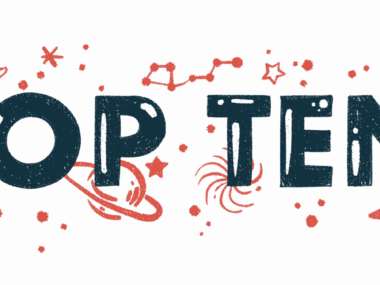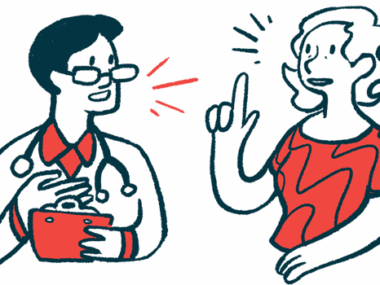The importance of a knowledgeable medical team to an SMA patient
My usual doctors and nurses brought me relief and likely sustained my life
Written by |

“Let me go, Mum,” I begged. It was Day 2 of a harrowing hospital stay. My chest had been hurting and feeling tight, nonstop. I couldn’t sleep. I couldn’t eat. I was tachycardic, with a heart rate in the 120s to the 140s. I needed a urinary catheter. I couldn’t even swallow my saliva. It was hell.
As I lay in her arms, I begged my mum to let me die if that were coming. I knew it would devastate her, but I was exhausted. For once in my life, I didn’t have any fight left in me.
As you can see, however, I’m still here.
A tale of two hospitals
I was rushed to the nearest emergency room on Aug. 20.
It was the day after a consultation with an orthopedic surgeon about my spine, and a few days after I was discharged from an almost three-week hospital stay for pain management. My spine’s extreme curvature had gotten to the point of pinching my nerves so badly that I couldn’t sit without steroid shots; thus, we were seeking a permanent surgical solution.
My family and I didn’t expect that the consultation, along with nausea from my new pain medication, would exhaust me to the bone. Which led to my not eating or drinking much during the day. Which led to tachycardia from dehydration and acidosis the next morning, exacerbated by my losing 22 pounds in the past two months from severe spinal pain. All atop my SMA.
Because of this, I got to witness how different hospitals and doctors approach healthcare.
Per paramedic protocol, I couldn’t be sent to my usual hospital. I had to be sent to the one only a few minutes away from my house — something that felt fine, at first, because I’d stayed there before in February.
Unfortunately, the hospital wasn’t equipped to handle my case. It had become understaffed, and the healthcare team available wasn’t familiar with SMA — which is no one’s fault, as healthcare systems are often overburdened and Singapore’s Ministry of Health estimates there are only 40 to 50 Singaporeans with SMA. But in an understatement of the year, it made things difficult.
Thank God my usual medical team stepped in when the specialists I was seeing reached out to consult them.
Four days into my hospitalization and spiraling, my neurologist and home care nurse visited me on their day off. They assembled my pediatric neurologist and pain specialist over a video call to discuss my options, asking if I’d like to be transferred to my usual hospital. I said yes.
Within half an hour, the request was approved.
The road to recovery
I didn’t wait long for my pain specialist. It was also his day off, but he came in the evening anyway, to treat me. More than that, he stayed past 10 p.m., when there was a complication with the sympathetic nerve blocks he administered and I was unresponsive for an hour.
He was the first to directly (and successfully!) treat the cause of my pain. Upon hearing that my lungs were clear, that my electrocardiogram showed no concerns (tachycardia aside), and that I was nauseous and vomiting before my hospitalization, he guessed my esophagus was acting up. Of all things that helped, over-the-counter heartburn medication helped the most. I had less pain and could eat again, reducing the acidosis.
The second person to treat my chest pain directly was one of my home-care doctors. A couple days after my pain specialist first saw me, the nurses and doctors in the ward noted I was tachycardic the entire day. My heart rate jumped to the 160s, almost reaching the 170s, and a different, additional pain began, separate from the one caused by the esophagus.
As my pain specialist prescribed something to further relax my esophagus, my home care doctor visited. He then prescribed bisoprolol to calm my heart. For the first time in days, a pain attack didn’t last for more than 20 minutes — nor has one happened since.
The ones I now live for
There are lessons to be learned with every hospitalization. I’m certainly taking away a truckload of them this time. But the one that stands out most to me is that I could well be dead by now if my medical team hadn’t gone above and beyond for me.
I regret that they had to be in the position they were in, that I’d disturbed their days off. Nevertheless, I’m indebted to them, and I hope I make them proud with the life they gave back to me.
To paraphrase something my neurologist said to me before the transfer: I have so much work left to do.
Note: SMA News Today is strictly a news and information website about the disease. It does not provide medical advice, diagnosis, or treatment. This content is not intended to be a substitute for professional medical advice, diagnosis, or treatment. Always seek the advice of your physician or other qualified health provider with any questions you may have regarding a medical condition. Never disregard professional medical advice or delay in seeking it because of something you have read on this website. The opinions expressed in this column are not those of SMA News Today or its parent company, Bionews, and are intended to spark discussion about issues pertaining to spinal muscular atrophy.








Leave a comment
Fill in the required fields to post. Your email address will not be published.